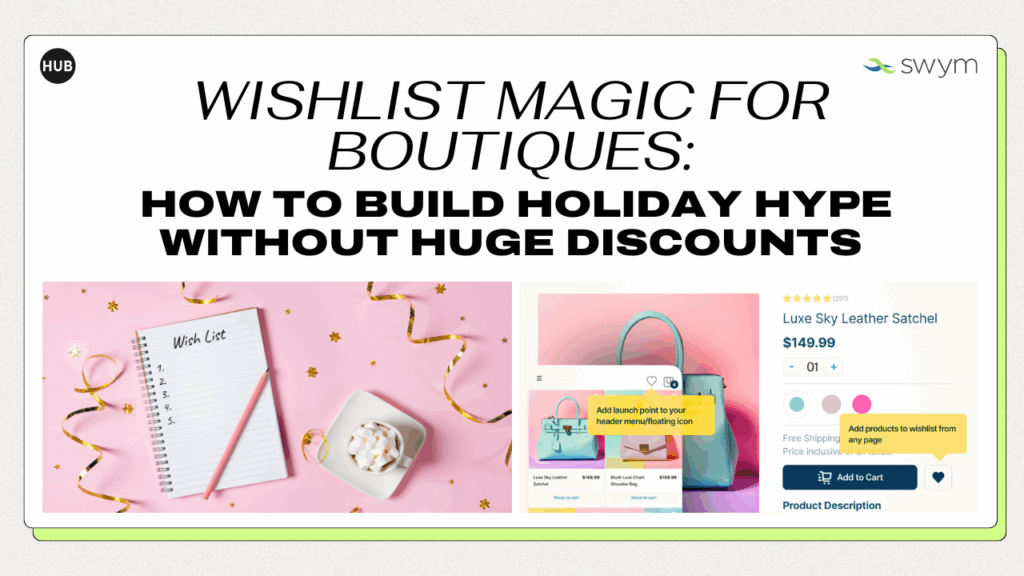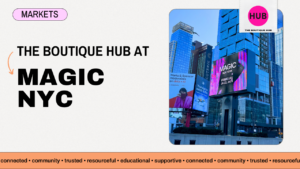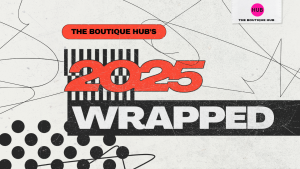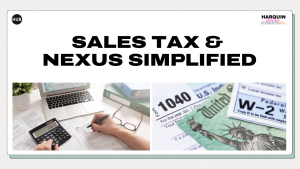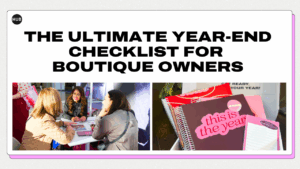The following blog post is sponsored content provided by SWYM.
The holiday season is exciting for boutiques. Apparel alone drove $45.6 billion in 2024 holiday sales, making it one of the season’s top-performing categories.
But let’s be honest: the holiday rush is also a high-stakes audition for introducing your boutique to shop-happy customers. Meanwhile, you’re busy juggling inventory, building promotions, and handling customer support with the hope of making a great first impression. With that much pressure, you may feel like you have to offer steep discounts to capitalize on the season.
But what if the best holiday sales strategy didn’t require slashing prices?
That’s where a robust wishlist feature on your website can help. Instead of letting your wishlist collect hearts and dust, turn it into a powerful sales and engagement tool. Here’s how you can use these wishlists to build holiday promotions that won’t lose you revenue due to holiday discounts.
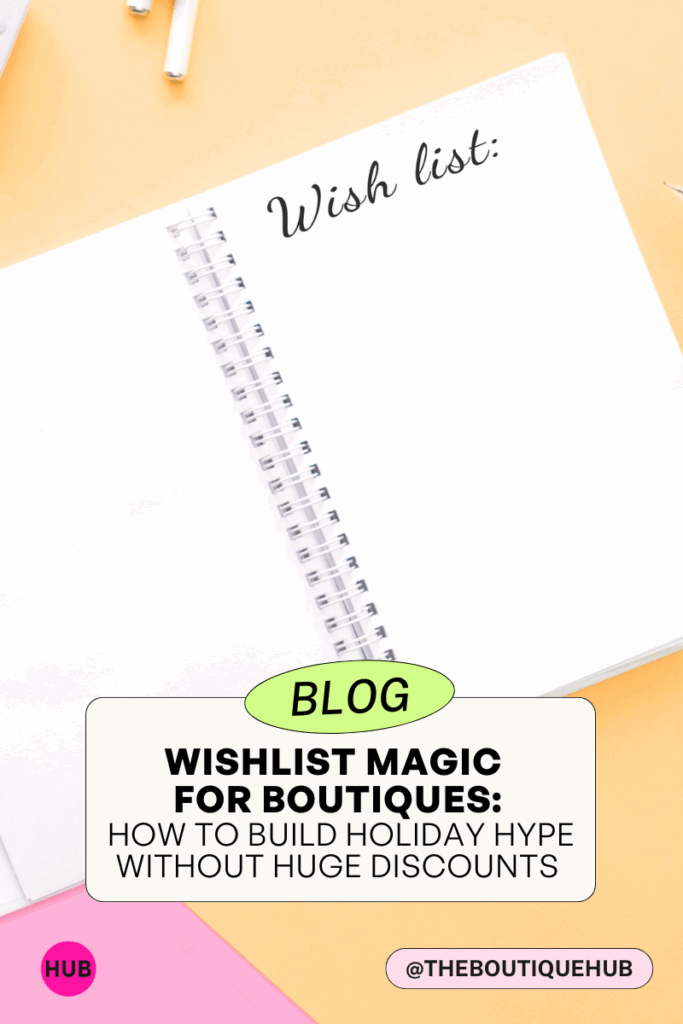
Use Wishlists to Capture Buying Intent
Most customers aren’t ready to buy the first time they visit your store, even during the holiday rush. Eighty percent of shoppers do product research before they make their first purchase. Your wishlist should make those customers feel invested in your products, even if you’re not offering a discount.

At the very least, be sure to add a clear wishlist function on your product pages, giving it prominent placement. It should be clear, easy to see, and distinct from the other options (like “add to cart”). Usually, brands put a star or a heart on the product page, which indicates to shoppers that this feature is available.
Here are a few other best practices on how a wishlist can set your boutique up for success before (and after!) the holidays.
Let customers create an account and sign in.
This way, customers feel like they have more “ownership” in what they’ve saved. They can track their wishlists, customize them, and edit them to keep them up-to-date. The more invested they feel, the more likely it is they’ll come back and buy when the holidays roll around.
Watch your wishlist data to see which items are saved the most often. This gives you insight into which products are generating the most interest as the holidays approach.
Engage third-party integrations like Yotpo.
To reference the Willow Boutique success story as an example, this boutique was able to send all of its customers’ wishlist data into the Yotpo platform. Since Yotpo offers loyalty rewards features, their Yotpo account was now full of key customer data that could help drive engagement and retention after the holidays were over.
In leveraging this data, they could then set up SMS and email flows based on real user insights and send targeted messages about price drops, low stock alerts, and back-in-stock alerts to entice people to buy. And they did it all without having to offer a discount.
The results? Willow Boutique saw 100x ROI on its SMS and email flows.
Send Back-in-Stock and Low-Stock Alerts to Make the Sale
When something sells out or starts to run low, customers want to know. That’s especially true if they’ve already wishlisted it. Sending these inventory alerts creates a new persuasion tactic: customers feel a sense of urgency to buy, even if you aren’t offering any discounts. Here’s how to use them.

Set up automated emails or SMS for restocks and low stock triggers.
Restocks and low stock alerts are particularly effective because they make your product seem scarce. You can use these to hint that their favorited items are nearly running out.
Include a “your wishlist item is almost gone!” message.
Scarcity is a powerful motivator. Think of it this way: you’re not reducing the price, but you’re reducing the time the product may be available. And since these are built on automatic inventory alerts, there’s nothing sneaky about the messaging.
Show them exactly what they saved, using a visual nudge that sparks memory and urgency.
Remember that many customers are doing a lot of online research and may have used other boutiques’ wishlists since they last logged in to yours. A few gentle reminders, especially visual reminders, won’t hurt.
Use Wishlists to Personalize Email & SMS Campaigns
Generic marketing emails tend to get ignored. But if you know what each customer actually wants, you can create messages they want to open. Aim for personalization that drives a new sense of urgency. That way, you won’t have to rely on discounts to grab your customer’s attention.

Connect your wishlist to your email/SMS platform (like Klaviyo or Yotpo).
Your wishlist can feed all your wishlist data into these platforms for easy customer segmentation.
Send price drop alerts or curated reminders based on saved items.
This ensures that only people actually interested in a particular product’s inventory receive alerts about it.
Create segmented campaigns for “wishlist savers.”
Doing this will help you target each campaign to the specific kind of customer you want to talk to. You can use that customer’s behavior (wishlisting a type of product category often, for example), to write more customer-relevant email sales copy.
An example from Wild Oak Boutique highlights how specific customer behavior can highlight which people are ready to receive these nudges. By adding Save for Later features and incorporating them into the nudges, they drove higher RPR (Revenue per Recipient), even outpacing their customer segments for abandoned browsers. In other words, they were able to identify a customer segment who was ready to place orders. All those customers needed was a well-written nudge.
The “Save for Later” feature lets you do the same with your flows, triggering gentle nudges along with low stock alerts. If you have a lot of people who are on the fence about a product, you’d be surprised how one well-timed email or SMS can change everything.
Encourage Gifting With Shared Wishlists
Customers aren’t just shopping for themselves, especially when it comes to birthdays and holidays. A shareable wishlist becomes a key tool around these holidays. With shareable wishlists, you can inspire Fear of Missing Out (FOMO) and highlight the social proof that comes when a product is in demand.

When someone sees that someone else wants a product, they may be more likely to want it themselves. This will feel like an incentive to buy your product without actually offering a discount to customers. Just as important, shared wishlists can integrate easily with social media shopping, which makes it easier for your products to spread online.
Let users share wishlists with friends/family. You’ll need a robust wishlist platform here—more details in a second.
Promote this as a gifting feature in your emails.
Remind people that they can share wishlists and give them a few reasons to do so. Highlight the “giving” aspect of the season or remind people that they can spread gift ideas with shareable wishlists.
Consider a “wishlist gift guide” to support the idea.
Publish it on your website and social media so people remember they can share wishlists from your website.
Keep Wishlists Branded, Fast, and Seamless
If your wishlist feature feels clunky, slow, or off-brand, customers won’t want to use it. They’ll think your wishlist reflects your entire boutique. And if your wishlist runs slowly, they may assume that other things run slowly: slow shipping, meandering load times, and sluggish customer responses. Instead, you should want the experience to feel just as polished as the rest of your site.
Choose a wishlist tool that lets you match your brand fonts/colors.
A properly matched and branded wishlist will feel clean and professional. It will also remind customers which brand they’re working with, and it never hurts to be remembered.
Optimize for mobile so customers can save items from anywhere.
According to SEM Rush, most U.S. searches (63%) begin on mobile devices. And remember: lots of customers do their first holiday shopping research online before they buy anything. That often happens via mobile. You’ll capture more customers if your wishlist is mobile-friendly, too.
Connect your wishlist with other tools like the Shopify app.
We’ve already mentioned Yotpo as an example, but the more tools you can integrate with that match what you already offer your customers, the more of an asset the wishlist becomes.
In the Wild Oak example, customizing their messaging helped them obtain better results. But simply using a better wish list platform also helped them reach their goals for loading speeds. All the improvements in their wishlist features led to an 85% year-over-year increase in the contribution of wishlist revenue and helped them double their conversions.
Don’t Discount the Importance of Your Wishlist
The holiday season is crunch time for boutiques like yours. But you don’t have to slash prices to compete and drive engagement. You just need the right wishlist setup to turn casual shoppers into more engaged, committed customers who remember your products. And when you integrate third-party applications, you can also create better marketing flows to drive engagement, even at full price.
So don’t slash your prices if you don’t have to. Swym’s Wishlist Plus is built for boutique owners who have those same goals: keeping your wishlist captivating and high-performing, but never low-value.
Ready to Grow Your Boutique with the Best in the Business?
Whether you’re just getting started or scaling to the next level, The Boutique Hub is your go-to community for boutique owners who mean business.
Join thousands of boutique owners inside our membership and get instant access to:
- 100+ trainings, templates, and proven strategies
- Insider wholesale discounts on Hubventory
- A private community of supportive, driven retailers
- Monthly tools to grow your sales and streamline your biz
👉 Ready to make your next move your best one? Join The Boutique Hub Membership
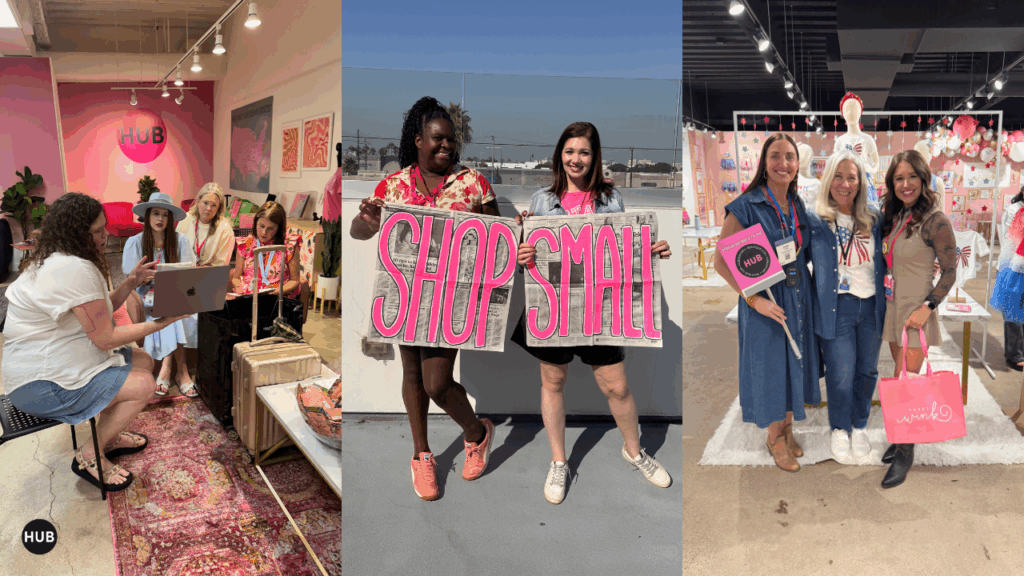
- The Boutique Hub at MAGIC NYC
 by Shannon GordonThe Hub Team is heading to MAGIC New York again and we couldn’t be more excited! With over 320+ brands, you are sure to find more MAGIC in a (New York) minute!
by Shannon GordonThe Hub Team is heading to MAGIC New York again and we couldn’t be more excited! With over 320+ brands, you are sure to find more MAGIC in a (New York) minute! - The Boutique Hub is Heading to PGA Orlando!
 by Shannon GordonThe Boutique Hub is heading to the PGA Show in Orlando. Tapping into the fast-growing golf apparel market projected to hit $13B by 2032. Golf fashion is evolving beyond the course, creating big opportunities for boutique retailers. The Hub team will be connecting with brands, discovering new trends, and offering live education and retail audits at the event on July 28th. Boutique owners interested in athleisure, activewear, or preppy styles should consider adding golf-inspired looks to their lineup. VIP perks available through The Hub’s exclusive registration link.
by Shannon GordonThe Boutique Hub is heading to the PGA Show in Orlando. Tapping into the fast-growing golf apparel market projected to hit $13B by 2032. Golf fashion is evolving beyond the course, creating big opportunities for boutique retailers. The Hub team will be connecting with brands, discovering new trends, and offering live education and retail audits at the event on July 28th. Boutique owners interested in athleisure, activewear, or preppy styles should consider adding golf-inspired looks to their lineup. VIP perks available through The Hub’s exclusive registration link. - 2025 Wrapped: The Boutique Hub Community by the Numbers
 by Shannon GordonFrom thousands of daily conversations to millions of podcast downloads, 2025 was a powerful year for The Boutique Hub community. This recap breaks down the biggest wins, trends, and milestones—and shows how retailers can turn that momentum into a clear plan for an even stronger year ahead.
by Shannon GordonFrom thousands of daily conversations to millions of podcast downloads, 2025 was a powerful year for The Boutique Hub community. This recap breaks down the biggest wins, trends, and milestones—and shows how retailers can turn that momentum into a clear plan for an even stronger year ahead. - Sales Tax & Nexus Simplified
 by Shannon GordonSales tax and nexus can feel like one giant headache — but it doesn’t have to be. If you sell across state lines, even online, you’re expected to collect and remit sales tax based on where your customers live… and those rules change constantly. Understanding when you’ve triggered nexus (and in which states) is the key to staying compliant and avoiding costly penalties. This guide breaks it all down in simple terms, so you can finally feel confident about what you owe, where you owe it, and how to stay ahead of it.
by Shannon GordonSales tax and nexus can feel like one giant headache — but it doesn’t have to be. If you sell across state lines, even online, you’re expected to collect and remit sales tax based on where your customers live… and those rules change constantly. Understanding when you’ve triggered nexus (and in which states) is the key to staying compliant and avoiding costly penalties. This guide breaks it all down in simple terms, so you can finally feel confident about what you owe, where you owe it, and how to stay ahead of it. - The Ultimate Year-End Checklist for Boutique Owners
 by Shannon GordonWe are so excited to be bringing you some tips to make rolling into 2026 the smoothest transition yet! Here you will find our Boutique Owner’s End of the Year Checklist, filled with info on taxes, inventory, and more!
by Shannon GordonWe are so excited to be bringing you some tips to make rolling into 2026 the smoothest transition yet! Here you will find our Boutique Owner’s End of the Year Checklist, filled with info on taxes, inventory, and more!
